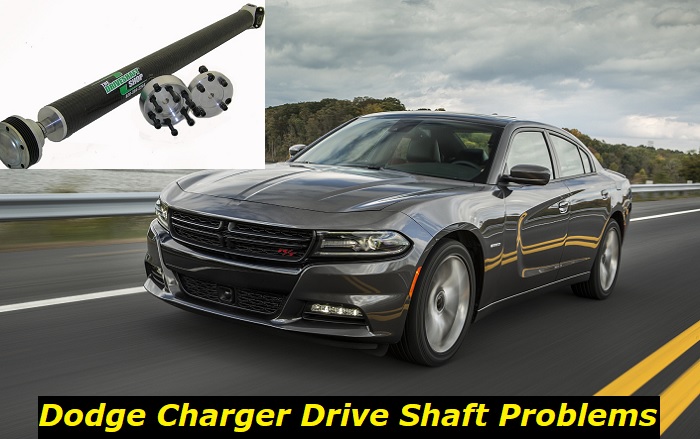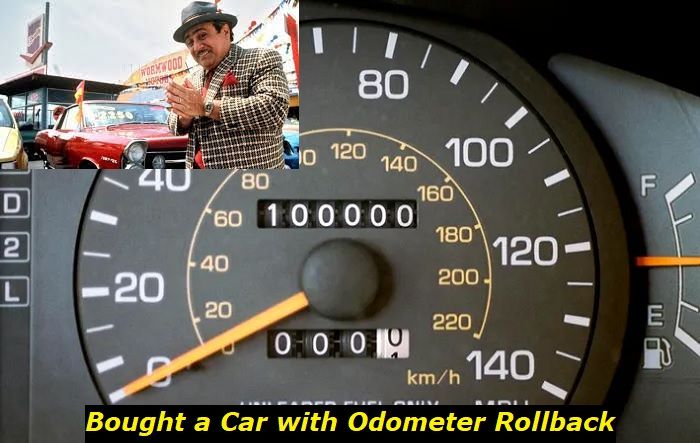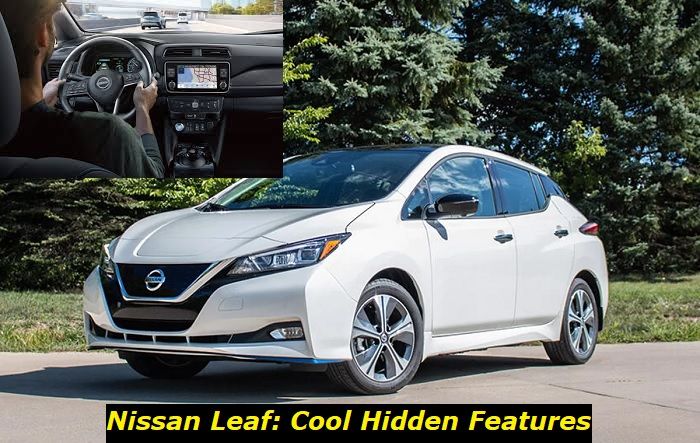Dodge Chargers are known for their performance and power. They are stylish and modern, yet still offer the muscle car appeal that many drivers love. Chargers come equipped with powerful engines as well as reliable car engineering that offer great handling and comfort.
Drive shaft problems highlights
- Level of importance:high
- Common reasons:old drive shaft, accidents, broken rubber protection
- DIY inspection:possible
- DIY repair:impossible
- Average price in shops:$250 - $500
- Average time:2 - 3.5 hours
- If ignored: no-drive, unpleasant sounds, hub wear

How Does the Drive Shaft Work?
A drive shaft is a long, rotating metal shaft that transmits power from the engine to the wheels. It is an essential component of any car with an internal combustion engine and helps to transfer power from the engine to the wheels. Several key components make up a drive shaft, including the universal joints, yokes, and center support bearing.
The drive shaft also plays a crucial role in providing balance and stability to the vehicle while it is in motion. Without a properly functioning drive shaft, a car would not be able to move safely or efficiently.
The drive shaft is located in the center of the car, beneath the floor pan. It connects the engine to the wheels and helps to power the car. Unfortunately, this part of the car is prone to damage, due to its location and the amount of stress that it experiences.
Common Symptoms of Drive Shaft Problems in Dodge the Charger
Upon visiting forums, reviews, and reports dedicated to the Dodge Charger, we found out the most common problems encountered by the owners of the car. A majority of the complaints have something to do with the following:
1. Vibrations
If you feel vibrations coming from beneath the car, it may be a sign that the drive shaft is not properly aligned.
2. Noises
If you hear any noises coming from the drive shaft area, it could be a sign that the bearings are worn out or that the universal joint is failing.
3. Leaking fluids
If you see any fluids leaking from the drive shaft area, it could be a sign of a seal failure or a bearing problem.
4. Binding
If the drive shaft feels like it is binding when you turn the steering wheel, it could be a sign of an alignment problem.
5. Excessive Play
If there is excessive play in the drive shaft, it could be a sign of a worn universal joint or a problem with the bearings.
Diagnosing and Fixing the Common Drive Shaft Problems of the Dodge Charger
According to the same sources and expert opinion from mechanics familiar with the ins and outs of Dodge cars, we have traced the said symptoms to the failure of the following components related to the drive shaft:
1. Misalignment of the Drive Shaft
If you're noticing that your Dodge Charger isn't driving as smoothly as it used to, there's a chance that the drive shaft is misaligned. This can happen for different reasons, but the most common cause is hitting a large pothole or bump in the road.
Luckily, if you catch it early enough, this is a relatively easy problem to fix.
- To start, you'll want to park your Dodge Charger on a level surface and put it in neutral.
- Next, locate the drive shaft and check to see if it's centered between the two axles. If it's not, then you'll need to adjust it.
- The easiest way to do this is by loosening the bolts that hold the drive shaft in place and then gently tapping it until it's centered.
- Once you've done that, simply retighten the bolts and you should be good to go.
If your Dodge Charger is still having issues after aligning the drive shaft, then there may be something else going on and you'll need to take it to a mechanic for a more thorough inspection.
2. Worn Bearings in the Drive Shaft
Worn bearings in the drive shaft of the Dodge Charger can be caused by several factors. The most common cause is improper maintenance or lack thereof.
Bearings need to be lubricated regularly to prevent them from drying out and becoming damaged. Another common cause of worn bearings is excessive wear and tear. Over time, bearings can become overloaded and start to wear down. This is especially true for high-performance vehicles that are driven hard regularly.
If not repaired, worn bearings can eventually lead to the complete failure of the drive shaft. This can cause serious damage to the vehicle and may even result in an accident. Replacing worn bearings is relatively simple and can be done at home with a few basic tools. However, it is always best to consult with a professional mechanic to be sure the job is done correctly.
- First, Jack up the vehicle and support it on jack stands.
- Next, remove the drive shaft by unbolting it at the differential.
- Once the drive shaft is removed, locate the bearings at either end of it. The bearings will be held in place by a retainer ring.
- Use a bearing puller to remove the old bearings from the drive shaft.
- Clean the area around the bearings and inspect for any damage to the drive shaft itself.
- Install new bearings onto the drive shaft, being careful not to over-tighten them.
- Reinstall the drive shaft and lower the vehicle.
- Test-drive the vehicle to be sure the repair was successful.
3. Fault in the Universal Joint
If you don't keep up with the maintenance of your Dodge Charger, you might start to notice some unusual noises coming from the car. One potential source of these noises is a worn universal joint in the drive shaft.
If left unrepaired, a worn universal joint can cause extensive damage to your car. The universal joint is responsible for connecting the drive shaft to the wheels. If it wears out, it can cause the drive shaft to come loose and even detach from the car. This can lead to serious accidents and injuries.
Fortunately, replacing a worn universal joint is relatively simple and inexpensive. You can find replacement parts at most auto parts stores. Once you have the new part, simply remove the old one and install the new one in its place.
If you notice any unusual noises coming from your car, make sure to have it checked out by a qualified mechanic. Worn universal joints are a serious problem that can be easily fixed if caught early. Don't wait until it's too late to take care of this important maintenance task.
4. Damaged Seals and Gaskets
There are several primary causes of damage to seals and gaskets in the drive shaft of a Dodge Charger. One of the most common causes is improper installation during manufacturing or repair.
This can cause the seal or gasket to become misshapen, which can then lead to leaks. Another common cause of seal and gasket damage is wear and tear. Over time, seals and gaskets can become brittle and break down, especially if they are exposed to extreme temperatures or chemicals.
If seals and gaskets in the drive shaft of a Dodge Charger are not repaired, it can lead to several problems. First, fluid may leak from the shaft, which can cause lubrication issues. This can lead to premature wear on the shaft and other components, and can eventually cause the shaft to fail.
Additionally, fluid leaks can lead to contamination of the surrounding area, which can be dangerous. Finally, if a gasket or seal fails, it can allow debris into the drive shaft, which can cause even more damage.
If you suspect that seals or gaskets in your Dodge Charger's drive shaft are damaged, it is important to have them replaced as soon as possible. This is a relatively simple repair that can be done by most mechanics. However, if you are not confident in your ability to repair the vehicle yourself, it is best to take your car to a professional.
To replace seals and gaskets in the drive shaft of a Dodge Charger, you will need to perform the following:
- Begin by removing the old seal or gasket. If the seal is damaged, it may be difficult to remove. In this case, you may need to use a chisel or other tool to break it up before removal. Once the old seal or gasket is removed, clean the area thoroughly with a rag and some brake cleaner. Be sure to remove all traces of the old sealant before proceeding.
- Next, apply a thin layer of anti-seize compound to the area where the new seal or gasket will be installed. This will help to prevent the new seal or gasket from sticking and will make it easier to remove if necessary.
- Install the new seal or gasket in the same location as the old one. If you are using a kit, follow the instructions that come with it. Otherwise, simply press the new seal or gasket into place.
- Once the new seal or gasket is in place, torque all of the bolts to the specified value. Be sure to use a torque wrench to ensure accuracy.
- Finally, clean up any debris or fluid that may have leaked out during the repair process. Then, test-drive your Dodge Charger to be sure the repair was successful.
Conclusion
In Dodge Chargers, a faulty drive shaft can be a particularly serious problem, as the car is often driven hard and fast. If you think that your drive shaft may be damaged, it's important to have it checked out by a professional as soon as possible. Otherwise, you could find yourself stranded on the side of the road if it completely goes bonkers while you are driving or it could also be a cause of a major accident.
About the authors
The CarAraC research team is composed of seasoned auto mechanics and automotive industry professionals, including individuals with advanced degrees and certifications in their field. Our team members boast prestigious credentials, reflecting their extensive knowledge and skills. These qualifications include: IMI: Institute of the Motor Industry, ASE-Certified Master Automobile Technicians; Coventry University, Graduate of MA in Automotive Journalism; Politecnico di Torino, Italy, MS Automotive Engineering; Ss. Cyril and Methodius University in Skopje, Mechanical University in Skopje; TOC Automotive College; DHA Suffa University, Department of Mechanical Engineering






Add comment